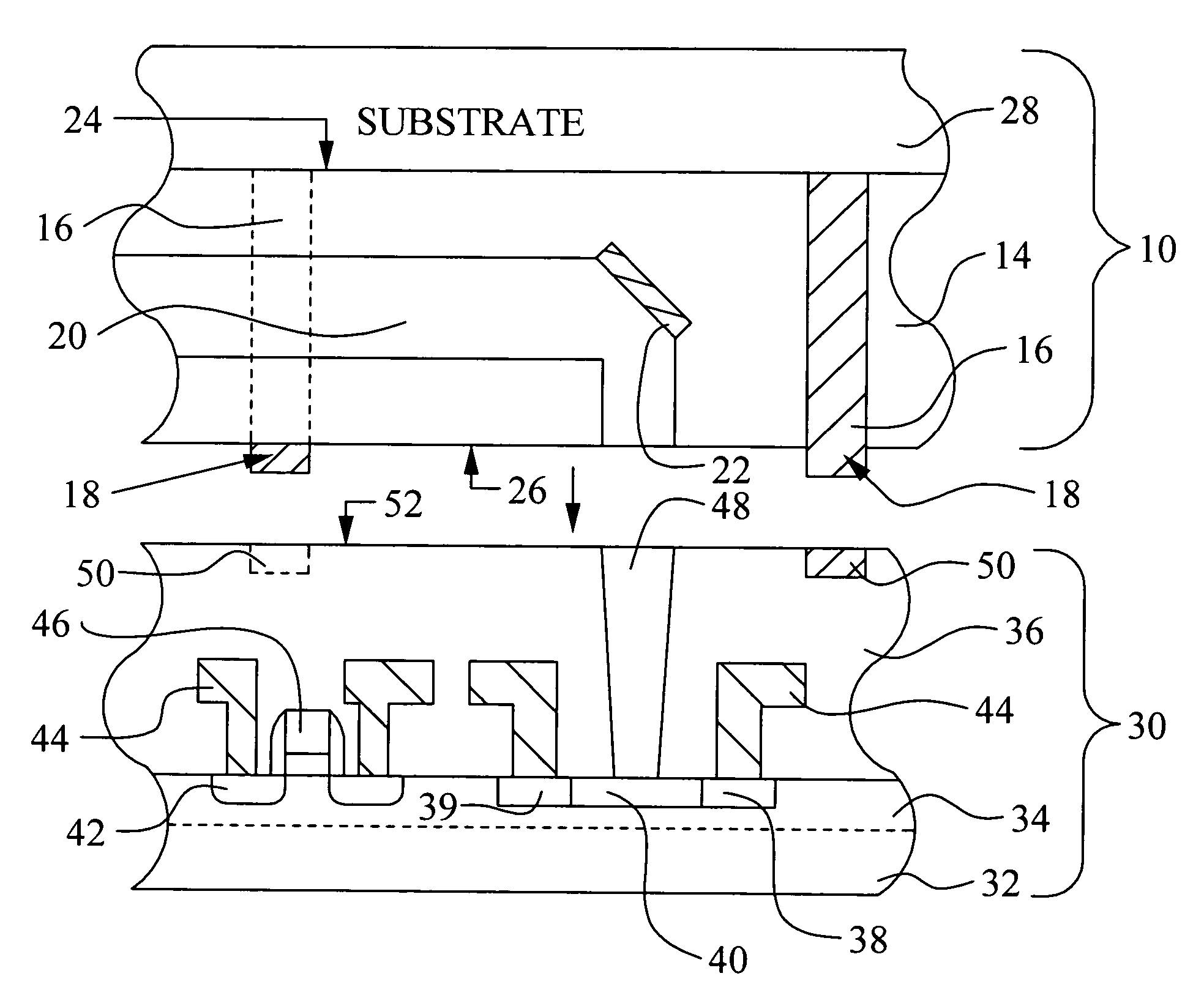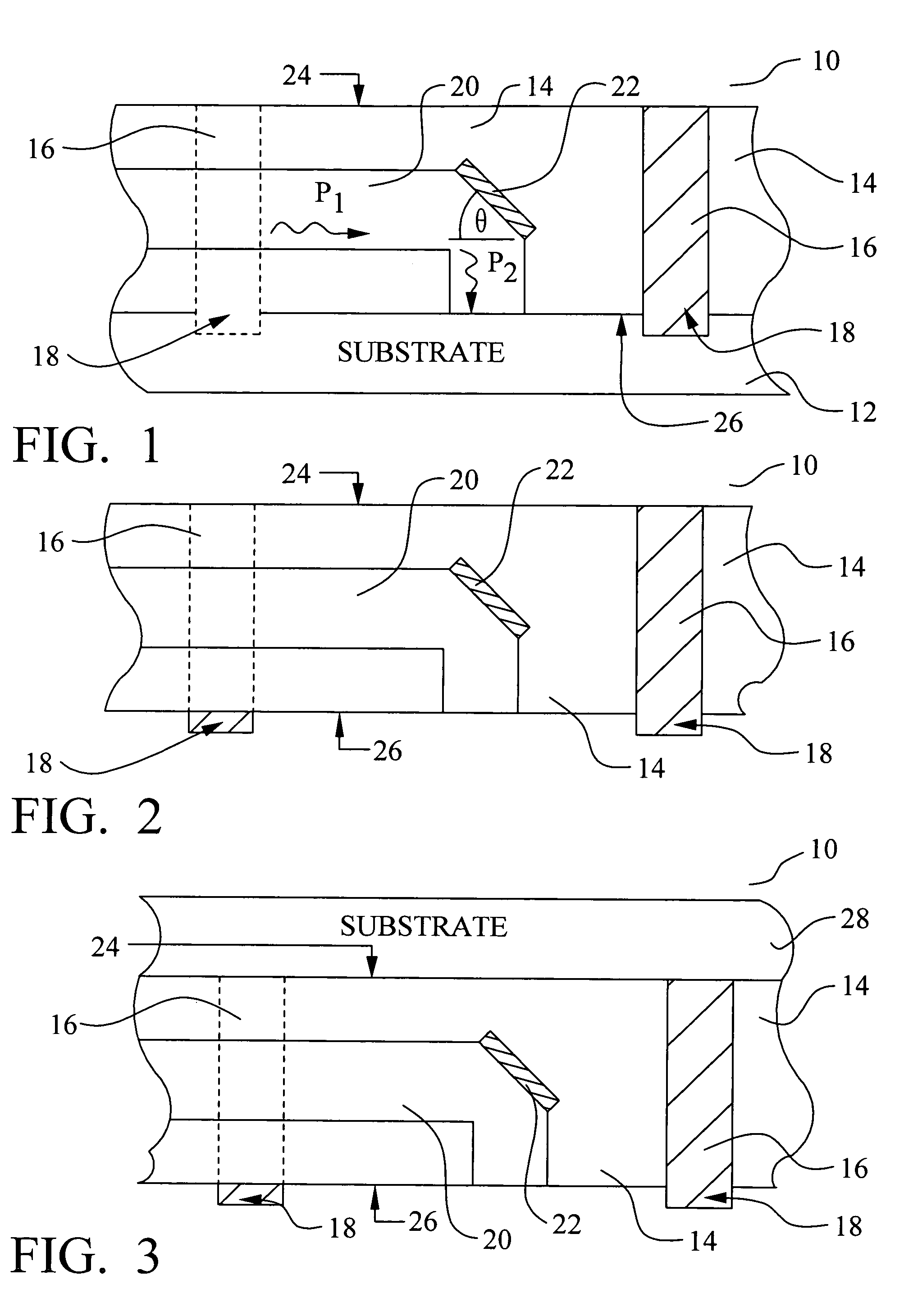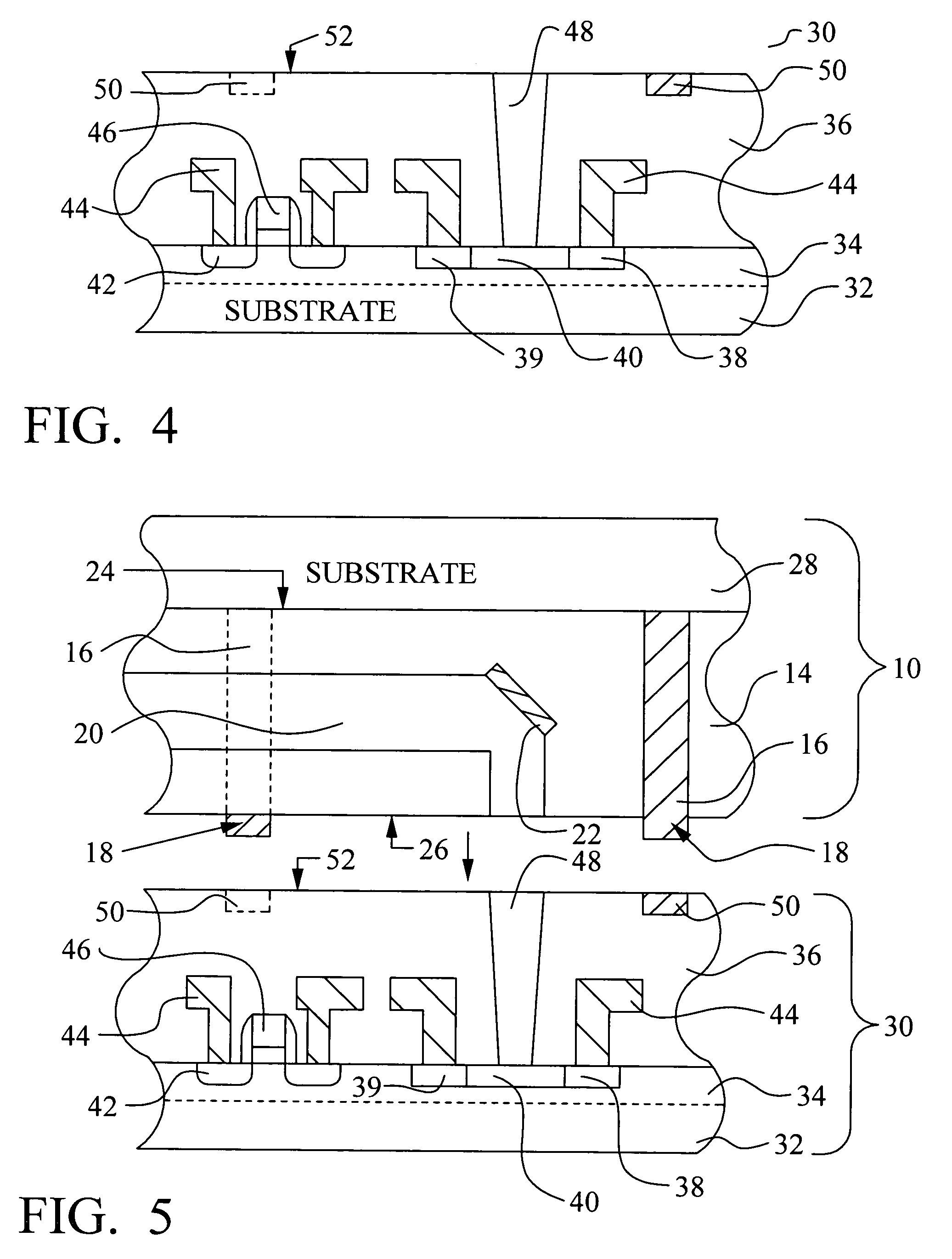VLSI-photonic heterogeneous integration by wafer bonding
a technology of wafer bonding and photonics, applied in the field of optical and electronic chip integration, can solve the problems of high propagation loss of metal lines, lossy substrate of silicon, and 10 gigahertz
- Summary
- Abstract
- Description
- Claims
- Application Information
AI Technical Summary
Benefits of technology
Problems solved by technology
Method used
Image
Examples
Embodiment Construction
[0029]The preferred embodiments of the present invention disclose methods to form hybrid, optical and electronic integrated circuit devices. An embodiment of the present invention relates to the integration of an optical wafer, or chip, with built-in optical devices such as waveguides or light emitter diodes, with an electronic wafer, or chip, with built-in electronic devices, such as transistors or photodetectors. A wafer bonding process uses thermal diffusion to bond metal to metal and to thereby bond together the optical and electronic substrates. A method to form optical waveguides with embedded mirrors is also disclosed. It should be clear to those experienced in the art that the present invention can be applied and extended without deviating from the scope of the present invention.
[0030]Referring now to FIGS. 1 through 6, a first preferred embodiment of the present invention is illustrated. Several important features of the present invention are shown and discussed below. More...
PUM
 Login to View More
Login to View More Abstract
Description
Claims
Application Information
 Login to View More
Login to View More - R&D
- Intellectual Property
- Life Sciences
- Materials
- Tech Scout
- Unparalleled Data Quality
- Higher Quality Content
- 60% Fewer Hallucinations
Browse by: Latest US Patents, China's latest patents, Technical Efficacy Thesaurus, Application Domain, Technology Topic, Popular Technical Reports.
© 2025 PatSnap. All rights reserved.Legal|Privacy policy|Modern Slavery Act Transparency Statement|Sitemap|About US| Contact US: help@patsnap.com



